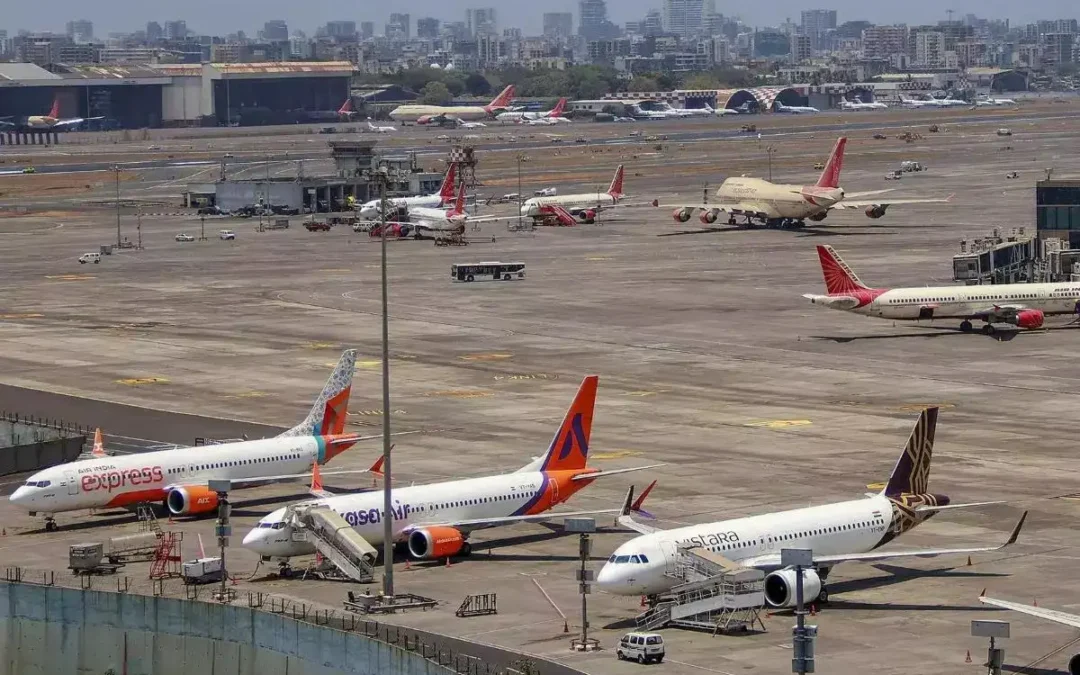The Asia Pacific region is projected to require 19,560 new narrow-body and wide-body planes over the next 20 years, majorly driven by demand from India and China, aircraft maker Airbus said on Saturday
Bangkok: India and China are driving air traffic growth in the Asia Pacific region where airlines continue to demonstrate agility in managing supply chain constraints, according to industry grouping AAPA.
The Association of Asia Pacific Airlines (AAPA), which represents 18 airlines, including Air India, is optimistic about the region’s continued air transport growth in 2026 on the back of resilient economies as well as strong passenger and cargo demand.
AAPA Director General Subhas Menon told PTI here that India and China are driving the air traffic growth in the Asia Pacific region.
In the first six months of this year, India saw 16 per cent in international air traffic, both inbound and outbound, and that is among the factors driving the growth, he said on Saturday.
Menon also said that Indian market has “huge potential”.
India is one of the world’s fastest growing civil markets and as per the latest Airbus forecast, Asia Pacific region is projected to require 19,560 new narrow-body and wide-body planes over the next 20 years, majorly driven by demand from India and China.
According to AAPA, the overall air traffic growth in the Asia Pacific region stood at 10 per cent in the first nine months of this year.
About Air India, Menon said the airline is a very important part of AAPA representing a very large market.
“You have to look at Air India in a historical perspective. It is a huge entity. And they are trying to get their act together. So, you have to give them some time to get there,” he said while speaking after the conclusion of the grouping’s 69th Assembly of Presidents in Bangkok on Saturday.
Asia Pacific airlines continue to demonstrate agility in managing supply chain constraints with capacity growth keeping pace with demand.
However, further escalations of tariffs could exacerbate the bottlenecks, Menon said in a release.
The Assembly passed resolutions related to four areas — aviation sustainability, supply chain challenges, carriage of lithium batteries onboard flights, and on taxes and charges.
It has pitched for targeted investment incentives and regulatory harmonisation to enhance regional MRO (Maintenance, Repair and Overhaul) and manufacturing capabilities.
AAPA has suggested adoption of “circular economy principles, including recycling and reuse of serviceable aircraft materials”.
Asia Pacific region is projected to require 19,560 new narrow-body and wide-body planes over the next 20 years
The Asia Pacific region is projected to require 19,560 new narrow-body and wide-body planes over the next 20 years, majorly driven by demand from India and China, aircraft maker Airbus said on Saturday.
The demand, Airbus said, represents 46% of the global requirement for 42,520 new aircraft over the timeframe of 20 years.

India and China are driving a major portion of the growth, Airbus Asia Pacific President Anand Stanley(In pic) said here. With rising passenger traffic, the Asia-Pacific region is expected to see an annual passenger growth of 4.4%, higher than the global average of 3.6%. India is one of the world’s fastest growing civil aviation markets and airlines have placed huge orders as they expand their fleets to cater to the rising traffic demand.
Presenting the forecast during the Association of Asia-Pacific Airlines’ (AAPA) Annual Assembly of Presidents in Bangkok, Airbus said the region is projected to require around 3,500 wide-body planes over the next 20 years.
This number represents 43% of global demand in the larger size aircraft categories.
As per the forecast, the Asia Pacific region will need around 16,100 single-aisle aircraft, accounting for 47% of the new deliveries globally in the given time period. “Nearly 68% of the aircraft deliveries will support fleet expansion, while 32% will replace older models, significantly contributing to decarbonisation efforts.
“The next generation of Airbus wide-body aircraft offers an immediate 25 per cent improvement in fuel efficiency and a corresponding reduction in carbon emissions,” Airbus said.
Stanley said Asia Pacific region is entering an exciting phase of growth. Apart from passenger growth, network development, penetration of low cost carriers and infrastructure are the major drivers for air travel.

